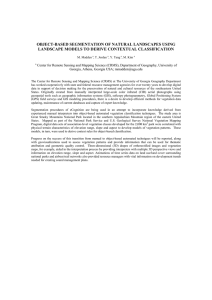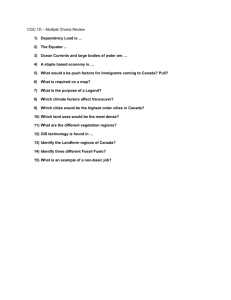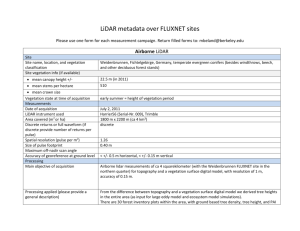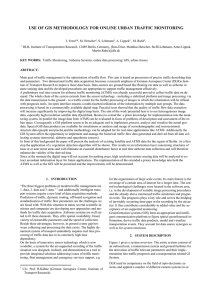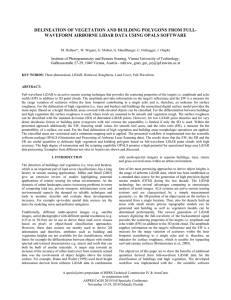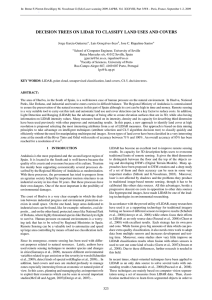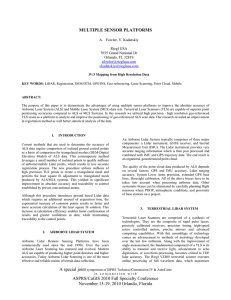URBAN VEGETATION DETECTION USING HIGH DENSITY
advertisement
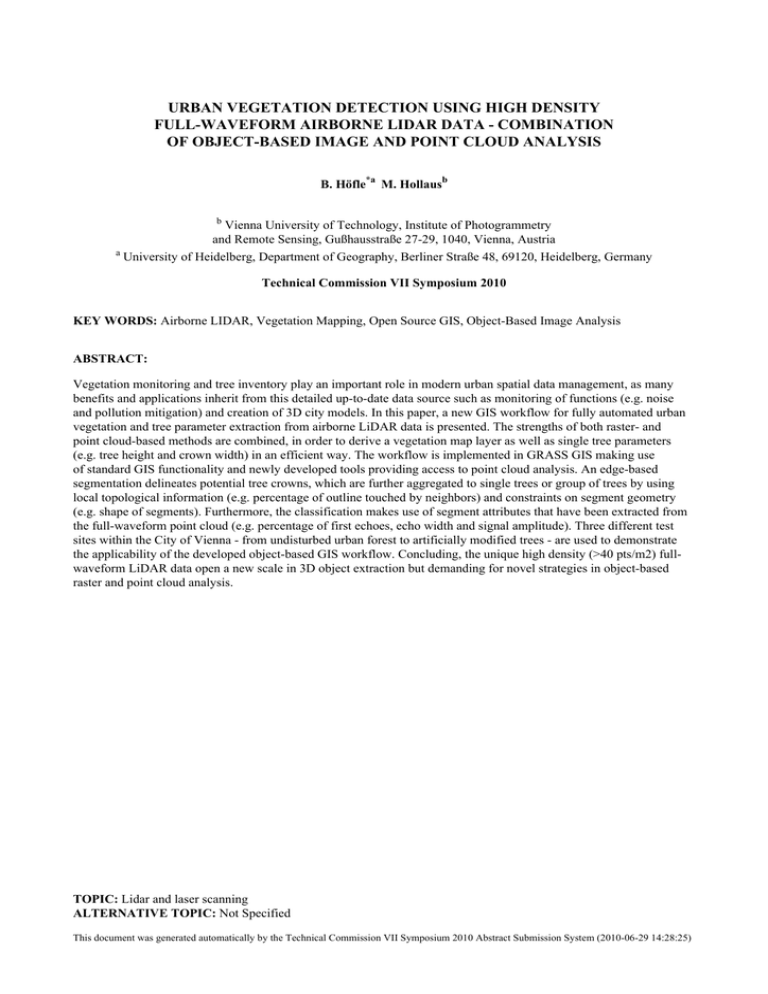
URBAN VEGETATION DETECTION USING HIGH DENSITY FULL-WAVEFORM AIRBORNE LIDAR DATA - COMBINATION OF OBJECT-BASED IMAGE AND POINT CLOUD ANALYSIS B. Höfle*a M. Hollausb b Vienna University of Technology, Institute of Photogrammetry and Remote Sensing, Gußhausstraße 27-29, 1040, Vienna, Austria a University of Heidelberg, Department of Geography, Berliner Straße 48, 69120, Heidelberg, Germany Technical Commission VII Symposium 2010 KEY WORDS: Airborne LIDAR, Vegetation Mapping, Open Source GIS, Object-Based Image Analysis ABSTRACT: Vegetation monitoring and tree inventory play an important role in modern urban spatial data management, as many benefits and applications inherit from this detailed up-to-date data source such as monitoring of functions (e.g. noise and pollution mitigation) and creation of 3D city models. In this paper, a new GIS workflow for fully automated urban vegetation and tree parameter extraction from airborne LiDAR data is presented. The strengths of both raster- and point cloud-based methods are combined, in order to derive a vegetation map layer as well as single tree parameters (e.g. tree height and crown width) in an efficient way. The workflow is implemented in GRASS GIS making use of standard GIS functionality and newly developed tools providing access to point cloud analysis. An edge-based segmentation delineates potential tree crowns, which are further aggregated to single trees or group of trees by using local topological information (e.g. percentage of outline touched by neighbors) and constraints on segment geometry (e.g. shape of segments). Furthermore, the classification makes use of segment attributes that have been extracted from the full-waveform point cloud (e.g. percentage of first echoes, echo width and signal amplitude). Three different test sites within the City of Vienna - from undisturbed urban forest to artificially modified trees - are used to demonstrate the applicability of the developed object-based GIS workflow. Concluding, the unique high density (>40 pts/m2) fullwaveform LiDAR data open a new scale in 3D object extraction but demanding for novel strategies in object-based raster and point cloud analysis. TOPIC: Lidar and laser scanning ALTERNATIVE TOPIC: Not Specified This document was generated automatically by the Technical Commission VII Symposium 2010 Abstract Submission System (2010-06-29 14:28:25)
